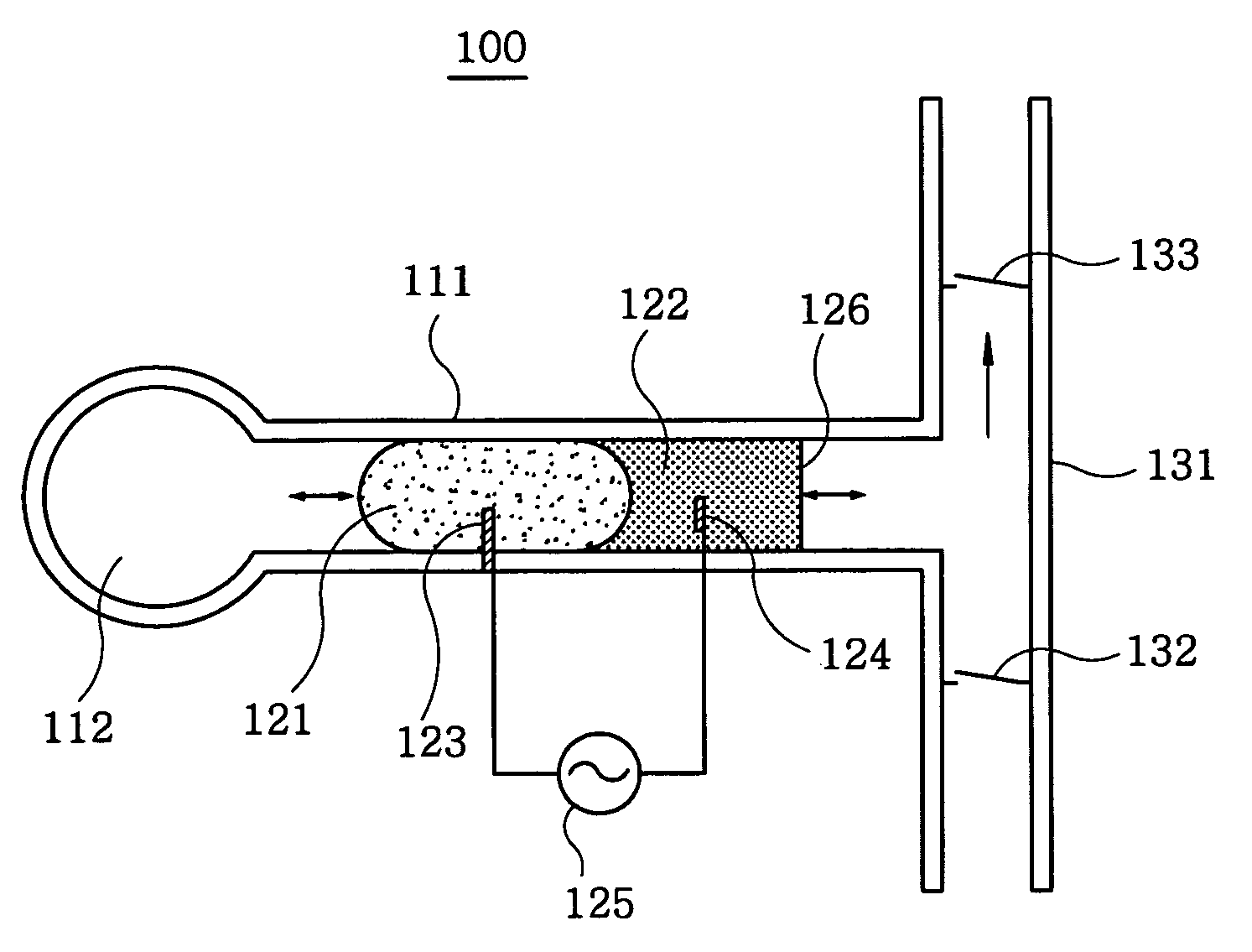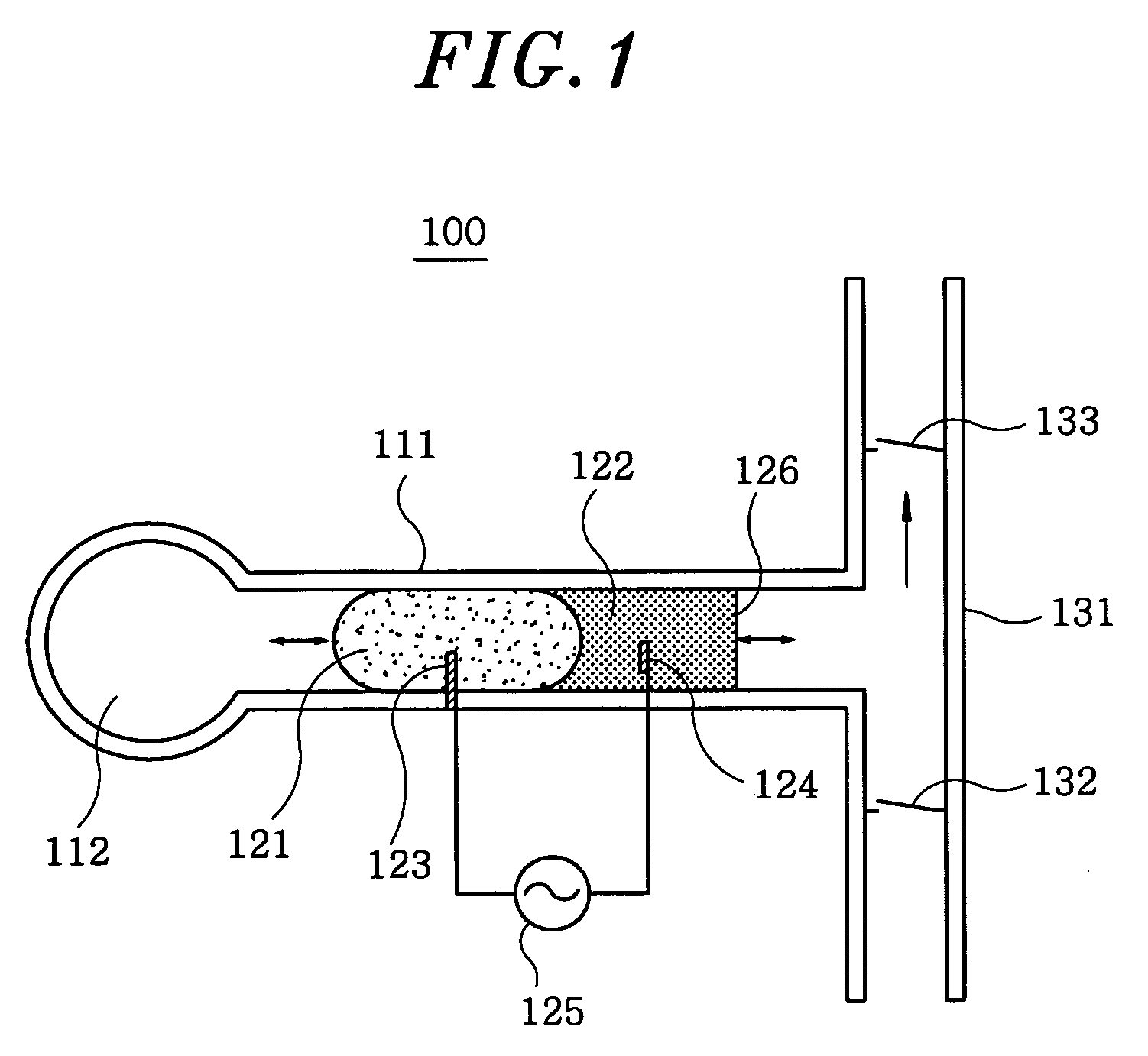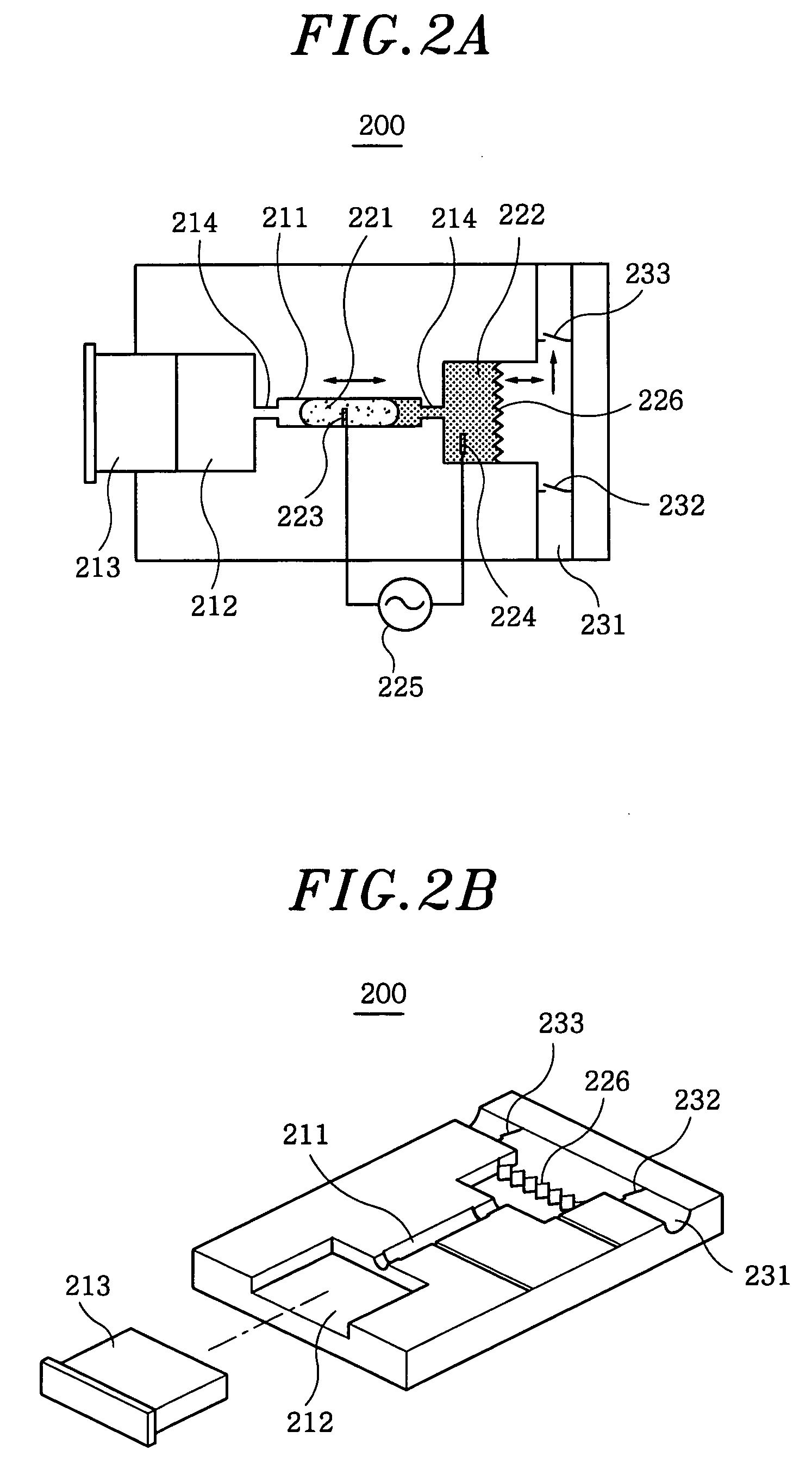Micropump controlled by electrocapillary and gas pressures
a micropump and electrocapillary technology, applied in the field of micropump, can solve the problem that no satisfactory micropump has been constructed so far
- Summary
- Abstract
- Description
- Claims
- Application Information
AI Technical Summary
Benefits of technology
Problems solved by technology
Method used
Image
Examples
example 1
[0051]The pumping rate (flow rate) of the micropump is determined by the moving rate of the mercury column and the cross sectional area of the capillary tube. The moving rate is determined by the distance of the mercury column movement multiplied by the frequency of the square or AC waves applied. The maximum pumping rate is then expressed by Eq. 2:
Pumping rate=d·f·A Eq. 2,
where d is the distance of the mercury column movement, f is the frequency of the AC or square pulse wave, and A is the cross sectional area of the capillary tube. The pumping rate may be adjusted by controlling any of these parameters.
[0052]When the change in surface tension of mercury was 5%, which was usually achievable with a half volt amplitude, the gas volume was 1.0 cm3, the radius of the capillary tube was 0.5 mm, and the frequency of the square or AC waves was 1 Hz, the pumped volume per one cycle was 0.79 μL / s at an atmospheric pressure of the gas and the distance of the mercury column movement of 1 mm,...
example 2
[0053]The same conditions were adapted as those in EXAMPLE 1 except that the gas volume was 0.1 cm3 and the radius of the capillary tube was 0.1 mm, the pumped volume per one cycle was 0.4 μL / s, the distance of the mercury column movement was 13 mm, and the pumping rate was 24 μL / min. When the length of the mercury column is to be 2 mm, the amount of the mercury column to be used is 0.000063 cm3, or 0.85 mg.
[0054]In summary, the micropump described in the present invention has the following characteristics: (1) a very small amount of liquids or gases can be pumped, (2) the size of the pump is small with its simple structure and the low construction cost, (3) the pump can be used to pump a wide variety of fluids including aqueous solution, nonaqueous solution, gases or the like, (4) no vibration and / or no noise is generated during its operation, (5) the flow and pumping rates can be easily controlled, (6) the pump can be arranged in any spatial orientation, (7) the pump may be applie...
PUM
 Login to View More
Login to View More Abstract
Description
Claims
Application Information
 Login to View More
Login to View More - R&D
- Intellectual Property
- Life Sciences
- Materials
- Tech Scout
- Unparalleled Data Quality
- Higher Quality Content
- 60% Fewer Hallucinations
Browse by: Latest US Patents, China's latest patents, Technical Efficacy Thesaurus, Application Domain, Technology Topic, Popular Technical Reports.
© 2025 PatSnap. All rights reserved.Legal|Privacy policy|Modern Slavery Act Transparency Statement|Sitemap|About US| Contact US: help@patsnap.com



